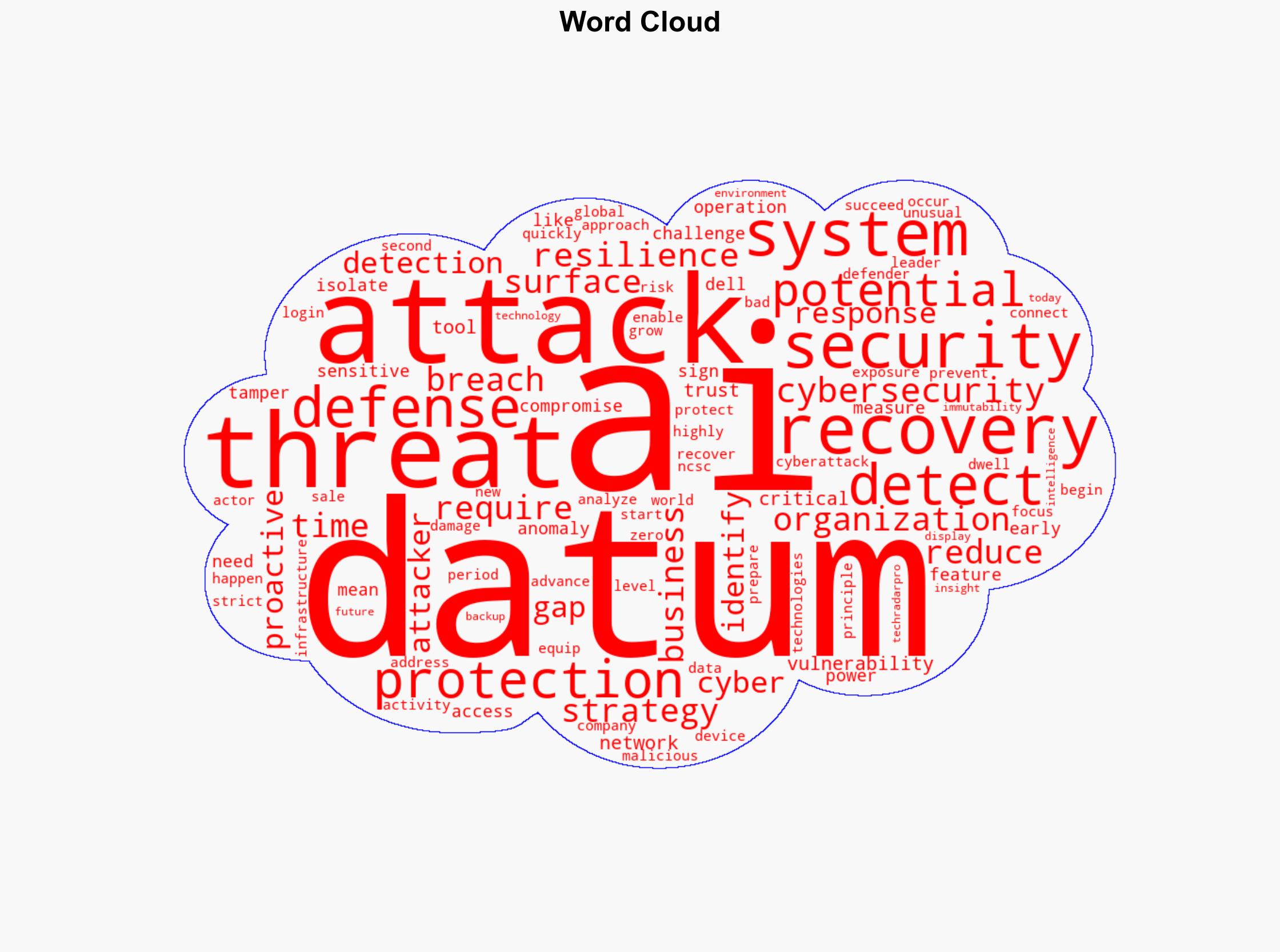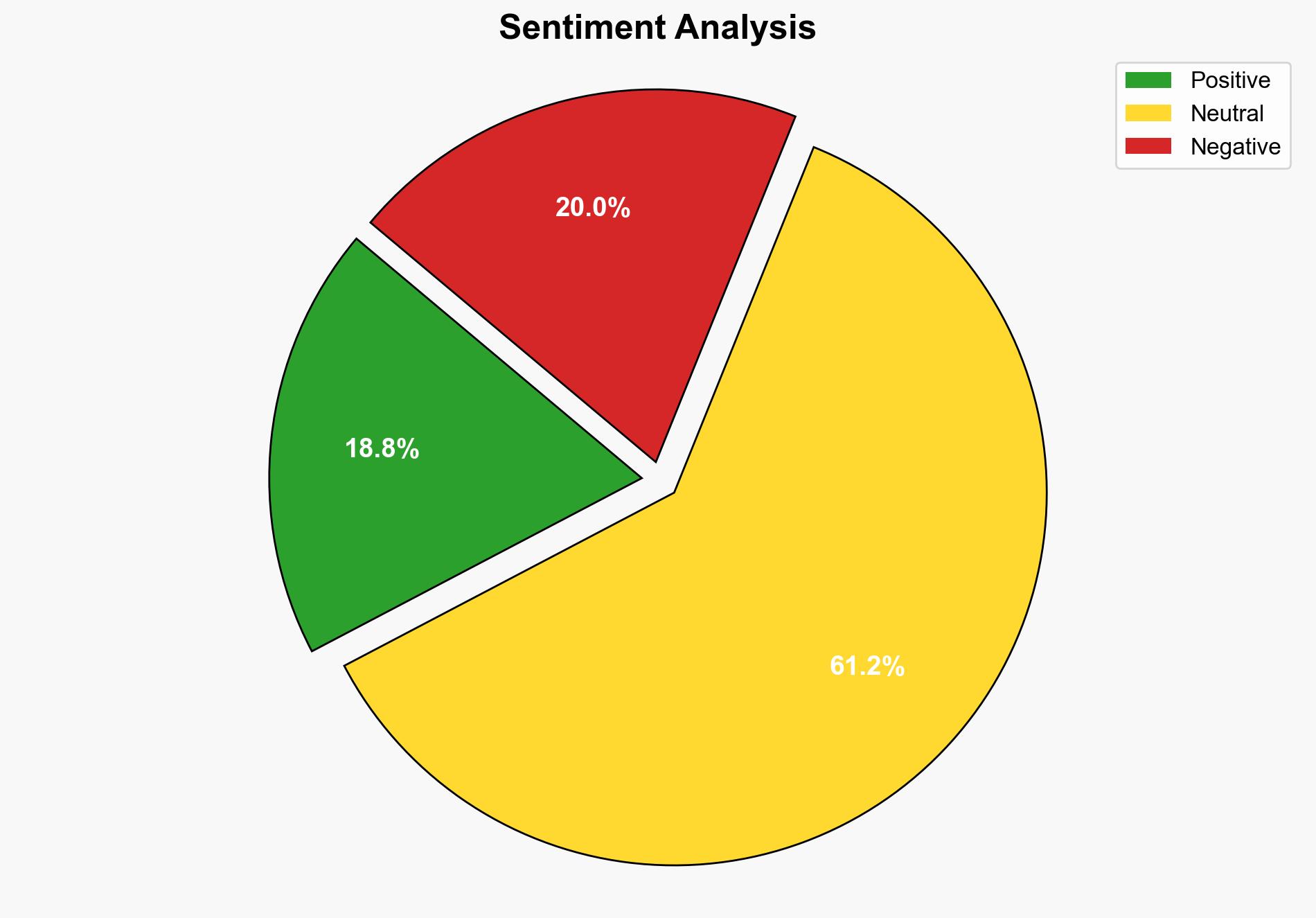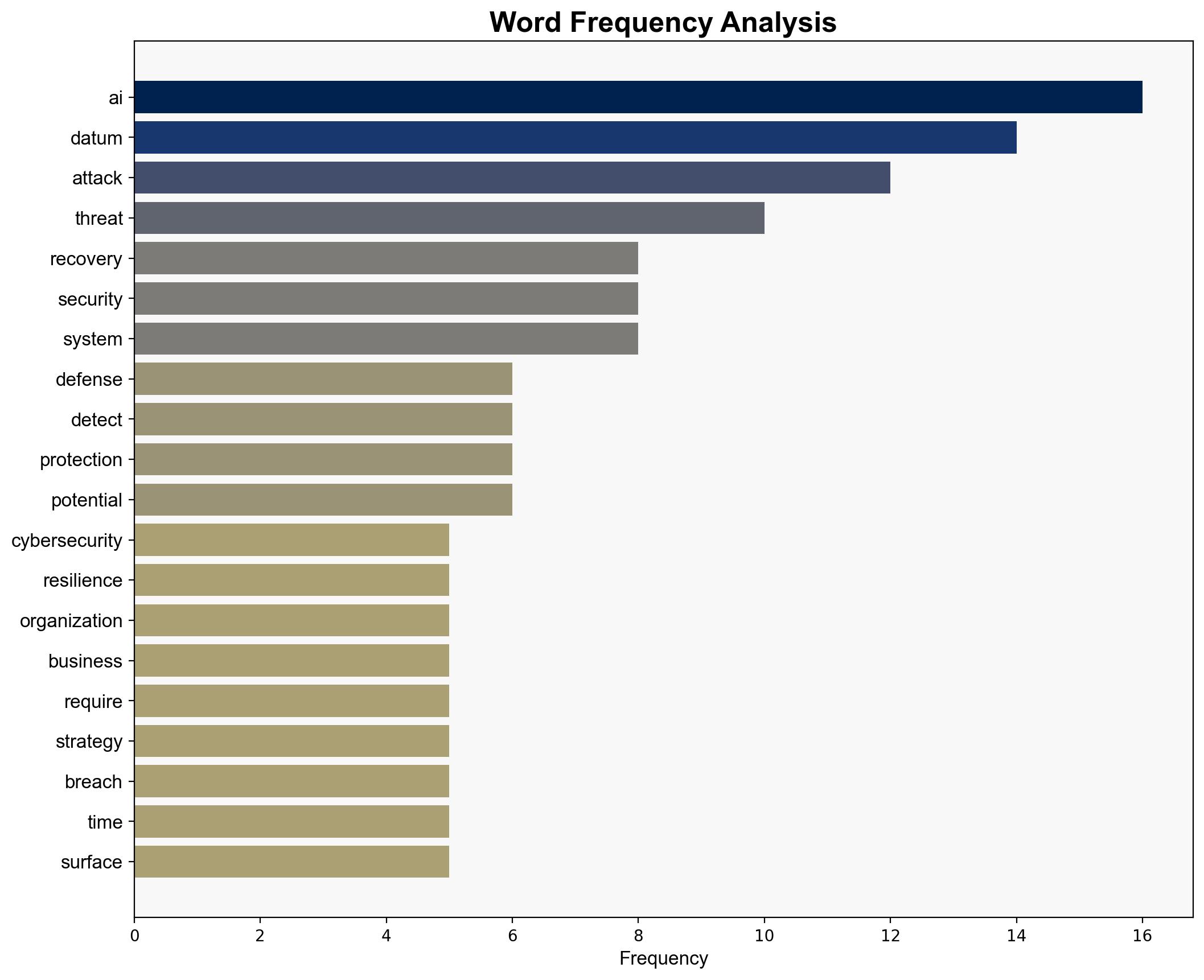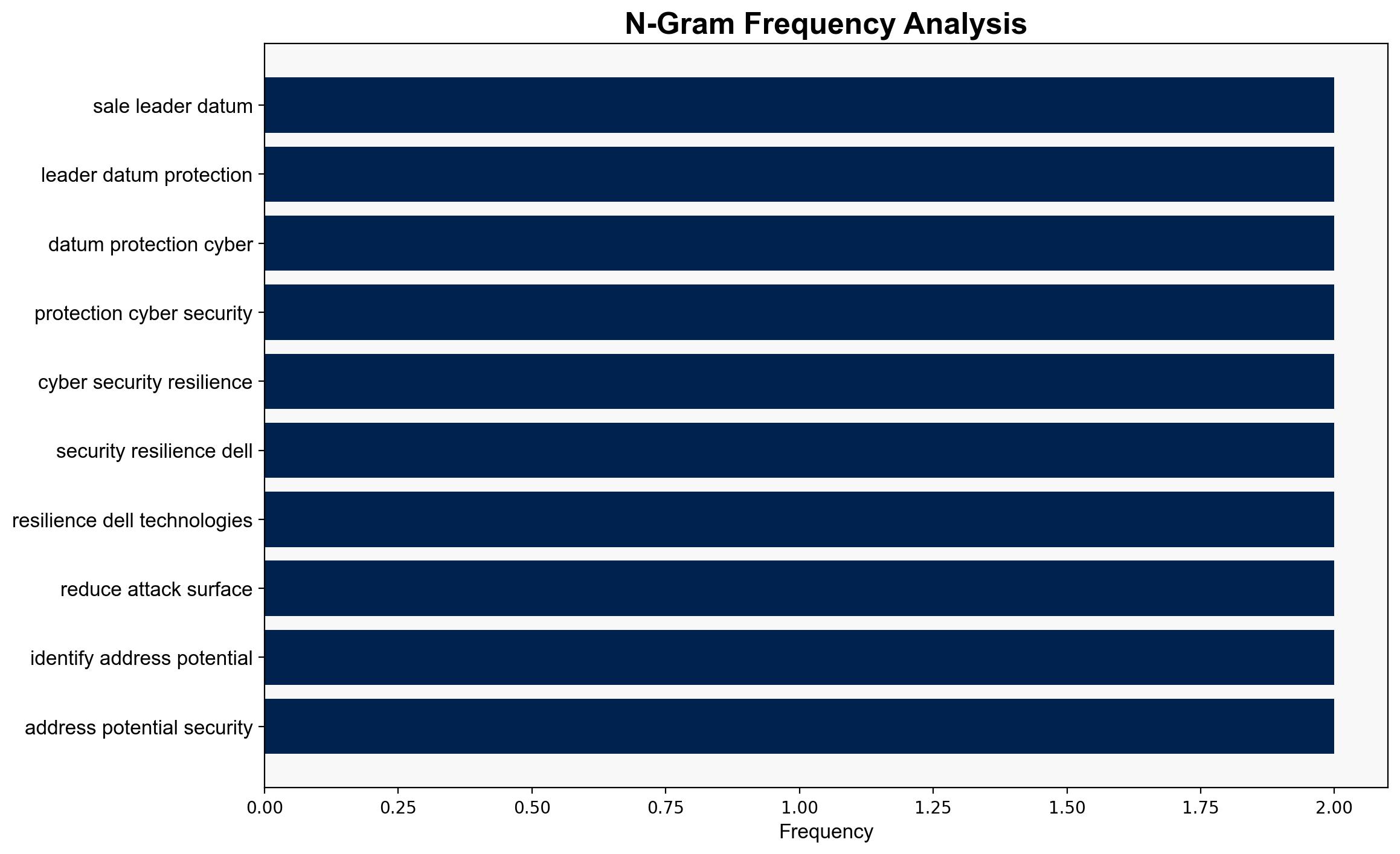Cracking the code resilient defense and rapid recovery – TechRadar
Published on: 2025-07-31
Intelligence Report: Cracking the code resilient defense and rapid recovery – TechRadar
1. BLUF (Bottom Line Up Front)
The strategic judgment indicates a high confidence level in the hypothesis that AI-driven cybersecurity threats are evolving faster than organizational defenses, necessitating immediate and comprehensive upgrades in cybersecurity strategies. The recommended action is to prioritize the integration of AI-enhanced detection and response systems, alongside a zero-trust architecture, to mitigate these threats effectively.
2. Competing Hypotheses
1. **Hypothesis A**: AI advancements in cybersecurity are outpacing organizational defenses, creating an urgent need for updated strategies and technologies to manage increased threats effectively.
2. **Hypothesis B**: Organizations are adequately adapting to AI-driven cybersecurity threats, and current strategies are sufficient to manage evolving risks.
Using the Analysis of Competing Hypotheses (ACH) 2.0, Hypothesis A is better supported due to the reported increase in AI-enabled threats and the identified gaps in current cybersecurity measures. The evidence suggests organizations are struggling to keep pace with the rapid evolution of AI threats.
3. Key Assumptions and Red Flags
– **Assumptions**: Hypothesis A assumes that AI capabilities in cyber threats are advancing at a rate that exceeds current defensive measures. Hypothesis B assumes that organizations have the resources and agility to adapt their defenses in real-time.
– **Red Flags**: Potential over-reliance on AI without adequate human oversight could lead to vulnerabilities. There is also a risk of underestimating the speed of AI threat evolution.
– **Inconsistent Data**: The lack of specific examples of successful AI-driven defenses could indicate an overestimation of current capabilities.
4. Implications and Strategic Risks
The primary implication is the increased risk of significant data breaches and operational disruptions if organizations fail to upgrade their cybersecurity frameworks. This could lead to economic losses, reputational damage, and potential geopolitical tensions if state-sponsored actors exploit these vulnerabilities. The dual dynamic of AI increasing both attack surface and detection capabilities presents a complex challenge that requires strategic foresight and investment.
5. Recommendations and Outlook
- **Immediate Action**: Implement AI-enhanced monitoring and response systems to reduce dwell time and improve threat detection.
- **Medium-Term Strategy**: Develop a comprehensive cybersecurity strategy that includes zero-trust architecture and regular penetration testing.
- **Long-Term Outlook**: Invest in AI research and development to anticipate future threats and maintain a competitive edge.
- **Scenario Projections**:
- **Best Case**: Organizations successfully integrate AI defenses, reducing breach incidents by 50% within two years.
- **Worst Case**: AI threats outpace defenses, leading to a significant increase in successful cyberattacks.
- **Most Likely**: A gradual improvement in defenses with intermittent breaches as organizations adapt.
6. Key Individuals and Entities
– Dell Technologies
– UK’s National Cyber Security Centre (NCSC)
7. Thematic Tags
national security threats, cybersecurity, AI advancements, zero-trust architecture




